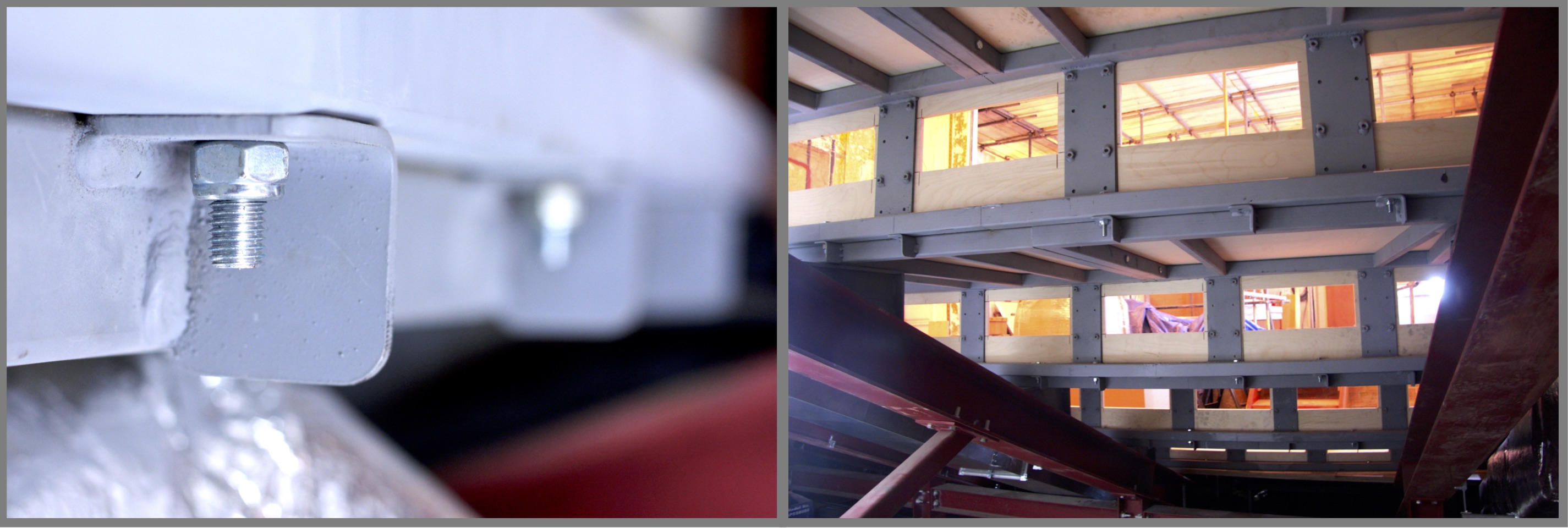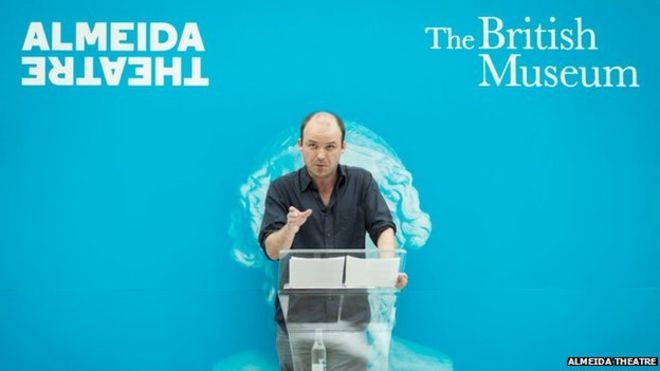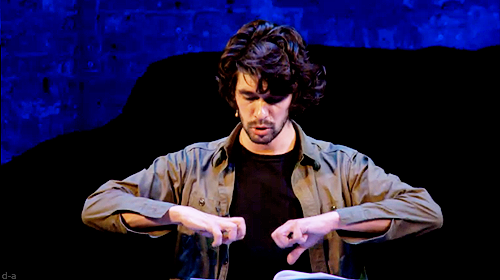- 01634 831719
- info@stagesolutions.uk.com
It took us a little time to design a lightweight staging system that also meets our criteria for robustness and versatility. But it was worth the wait.
The 1mx1m decks split into top and frame, so each weighs less than 10kg. They connect together quickly and positively with our unique drop-pin fastener.
We cut the legs to the length you want. And we make the treads to the height you want.
There are handrails and kickboards. And trolleys to carry it all which fit through a standard doorway.
Which is exactly why customers like the North York Moor Chamber Music Festival said: “the performers & artistic director loved them and even first time we got it assembled in 20 mins”.
For a lightweight staging system offering versatility, robustness, compact storage and genuine one-person set-up ask us about Studiodeck.
A few months ago we were contacted by the team at The Sunday Painter, an innovative gallery in Peckham, about some fabrication they needed: a large, shallow tray.
After a few weeks and a series of designs this turned into a 3.5m x 2.8m x 60mm tray in 2mm thick stainless steel. We were told was that it was going to sit in a custom-built hole in the floor, be filled with water and then other items would be placed in the water.
The making of the tray was the easy part. Keeping the thin material from collapsing in on itself was tougher and required an internal wooden frame to fit snugly inside.
The tray was the “frame” for Samara Scott’s Lonely Planet II, in which the artist places found items and everyday debris in the shallow pool. The Sunday Painter is one small gallery in a galaxy of big names and exotic stands but they’re getting lots of coverage. As for the work itself, you can see it below or head to the Frieze Art Fair in Regent’s Park.
The Mary Wallace Theatre is a small, well-equipped theatre on the Thames in Twickenham. It is the home of the Richmond Shakespeare Society. Last year we were contacted on their behalf by Paul Nicholson, an architect and event lighting designer, who is Technical Group leader at RSS. The theatre’s stage, built more than twenty years ago from two layers of discarded West End gate-leg rostra, was approaching the end of its useful life and the society was contemplating a major overhaul. Paul had to prepare the specification and design and it was to assist him with this that he called us.
Paul met our Phil Sparkes on site and they discussed the options. The key aims were:
Inevitably, the stage and wing space were irregularly shaped but we devised a plan which took care of every nook and cranny while offering great flexibility. The proposal featured 30 square metres of Metrodeck units centre stage. The surround was in bespoke steel frames and the offstage area in wooden joists to create the largest open area beneath. By working closely with Paul this solution genuinely addressed the needs of the client and the demands of the space.
As these photos show, potential problems caused by the uneven floor were counteracted by a laser-levelled steel frame on which the Metrodeck legs sit. This means every leg is identical and the stage is level. The central photo shows how much of the stage area was successfully filled with the demountable decks, which can operate at different heights or be removed entirely. The bespoke frames were then installed around them and the tops scribed in.
The picture below shows just how smooth the stage now looks from the new front edge to the back walls. We also built a highly practical downstage trough system for footlights etc with removable cross-bars so that larger items can be installed if required. In the narrow confines of the scene dock the robust treads and handrails, which lead up to the stage right area, are demountable so that the crew can get even the largest items onto or under the stage floor we have built.
The installation took place over a dark period in August and September. Despite all his work on the project, when Paul Nicholson came in to see the final results he put it simply: “I was knocked out by it!”
To see a short video about this job click here.
Nowadays large main contractors typically employ small sub-contractors like us for increasingly specialised tasks. So it is rare indeed to be able to look back at a job and see it evolve over a matter of years. Such was the case at the recently restored Regent Street Cinema in London. The cinema became known as the Birthplace of Cinema when, on 20 February 1896, the Lumière brothers’ Cinématographe machine was demonstrated there for the first time in the UK. So this restoration was truly a re-birth.
Back in 2011, we were invited by architect Tim Ronalds (with whom we had previously worked at Sevenoaks School) to contribute to a design process which was transforming a historically important but moribund building into one able to hold its own in the 21st century. The existing building had a flat floor and inadequate balcony. This is what it looked like:
The plan was to insert an entirely new seating tier structure which started at the front of the stalls and rose to meet the balcony in a single sweep. Not only that but the poorly raked balcony would then be re-fashioned to carry on seamlessly to the rear wall and the windows of the projection room. We said our bit and then heard nothing for a couple of years while the project dealt with the challenges of working with a listed and variously protected building. In 2013 we were contacted again and the dialogue re-started. We tendered for several tranches of work within the project and were delighted to be successful with the one closest to our hearts – the free-standing seating tier structure and balcony. Work began at the end of 2014 and finished by the spring of this year.
Our curved tier modules sat on an array of I-beams, with bolt-plates built into the risers to support the seats. Great accuracy was demanded because the seats and air-conditioning vents beneath them fitted perfectly – with absolutely no tolerance side-to-side.

When clad, the new form of the space became truly apparent. We then built a second layer of tiers over the balcony’s existing levels so that the sightlines were perfect all the way to the back row.
The new decor seeks to offer a viewing experience in keeping with the luxuriously restored Art Deco interior while achieving the high level of all-round technical provision we have come to expect. What do you think?
Now playing most famously at Kings Cross Station, Damian Cruden’s production of The Railway Children returned to its home town this summer where it played in The Signal Box Theatre at the National Railway Museum, built by York Theatre Royal.
The design is a genuine traverse-style seating layout with the track in the middle.
The action takes place on the long platforms and rolling rostra you can see in the photos. These areas are used to recreate not only the famous station but also the domestic interiors as well. To achieve this, the theatre needed robust and reliable modular staging units. We got the call and supplied no fewer than 178no 8’x4′ Steeldecks and legs. The result was a triumph in every respect.
You don’t have to have an in-depth knowledge of the Railway Children to guess that, designed like this and set at the National Railway Museum, the show features a real steam train. Of course, its majestic entry at the emotional climax of the play is the signal for children to rejoice and parents to weep uncontrollably.
Or was that just me?
In 2005 the UK Tang Soo Do Federation came to us for advice. They wanted staging for the judges and space to display the spectacular array of trophies at their upcoming World Championships.
We discussed the length, width and height as well as the effect they were looking to achieve.
We arrived at a package of Steeldecks which would provide the two levels of tiering to take both trophies and dignitaries.
What we supplied proved perfect for the World Championships and for subsequent events.
The superbly-named Riccallish Allsorts are a community theatre group from Riccall in Yorkshire.
Back in 2005 they had received a grant for equipment and decided on a new modular stage to replace their ageing chipboard one in time for the Christmas pantomime. Ken Davison contacted us looking for a stage that was easy to set up, professional in appearance and represented great value.
Metrodeck was the perfect system: easy assembly, professional performance, great value and compact to store.

The stage we provided was used in conjunction with a truss structure and drapes to create a self-sufficient proscenium-arch stage, which worked perfectly in the local school hall. It has also been versatile enough for the group to use in different layouts and different venues.
Davidson was very happy with the new staging: “We’d previously built a stage ourselves from chipboard, which took at least two hours to assemble and check it was safe. It creaked, it groaned, and safety was always a concern. Our new Metrodeck stage went together in 30 minutes flat – leaving us a lot more time for getting the rest of the production together. Everyone could help put it together, and it was really solid during the performance – no-one noticed any ‘floor noise’ – which is exactly what we wanted!”
Practical, professional, affordable.
The North York Moors Chamber Music Festival is an annual two-week concert tour of beautiful old churches in Yorkshire. It’s now in its seventh season.
As so often with tours, whether of the chamber or rock variety, the challenge is how to offer the best experience to the audience and performers when you are having to pack up the whole shebang every day or two, drive it some distance and then set it all up again, often in a different configuration. A proper stage improves the sightlines, acoustics and professionalism of the presentation. So if it can be done it’s a great benefit.
NYMCMF stalwart Chris Mason identified his two main challenges: storage and versatility. We suggested Studiodeck as the system most suited to their needs and together we worked up a truly efficient package.
Studiodeck is a system designed to be handled by one person and yet to perform like a much heavier system. One of its primary features is its compact storage. Chris knew exactly how much space he had in his trailer so we made three trolleys for the staging which fitted perfectly into the space available.
During the NYMCMF not only is the venue different every night but so is the musical programme. This meant Chris had to re-think the stage layout on a daily basis. So Studiodeck’s versatility and ease of set-up were key.
As Chris reported after the first use “the performers & artistic director loved them and even first time we got it assembled in 20 mins”.
If you’re thinking about a stage for your venue or group please contact us – we’re always happy to talk it through with you.
In July and August 2015 Time Out conducted a public online poll of London’s favourite theatres.
The National Theatre came top, but the remaining places in the top 10 were very largely taken up by what Time Out calls “smaller, hipper” theatres.
We were both interested and delighted to note that Stage Solutions supplies no fewer than 8 of these 10. Now for the other two!
To see the full list visit click here.
Last Friday (14 Aug) Stage Solutions customer Almeida Theatre produced a continuous reading of the whole of Homer’s epic poem The Iliad. 16 hours of continuous reading by 60 actors (many of them household names) began in the Great Court of the British Museum at 9am and ended at the Almeida itself well after midnight.
This was an extraordinary event and one that would formerly have been unavailable to all but a lucky few. Yet, in a brilliant combination of old and new technologies, the Almeida took the decision to live-stream the entire performance on their website. So, wherever you were, you could experience it through your computer, tablet or phone. I would always claim that theatre is a medium best experienced at first hand. But, if you managed to catch any of the streaming, you can’t fail to have been captivated by the intensity of both text and delivery. 
Three things stand out for me:
First, it shouldn’t really be a surprise but it’s nonetheless fantastic to be reminded how great the Iliad is. This a story from another country, another civilisation and quite another time but the themes it explores and the techniques it uses to entrap our attention are as effective here today as they were in Homer’s day.
Secondly, although this was not story-telling in its purest form – as the performers were all reading – it is still a great reminder of the power of the art form. Homer created this without writing it down. It was originally performed without sets or costumes, without sound or lighting effects. Nowadays, faced with a public demanding ever more extravagant technical effects, the power of the story-teller to capture our imaginations is a reminder that less is often more.
Thirdly, if technology is easy to present as a dangerous genie now well-and-truly out of its bottle, events like the live-streaming of the Iliad show us that it is still possible to make it work for us in the most creative of ways.
If you are interested, keep an eye on this – http://ow.ly/R0b8A – for news of Iliad podcasts and other related items.